First let me explain the F-S was never intended to be used like a Japanese Chef's knife. It will not slice paper-thin pieces of fish or vegetables. It was made to kill people! So the blade geometry is rather poor for holding razor sharp edges. The steep bevels that make it rugged also preclude it from taking a fine edge. It also means the blade does not, I REPEAT DOES NOT fit in the knife grinder on the back of your wife's damned electric can opener! If you even approach an electric grinder with an original WW-II F-S I hope the skies open up and a bolt of lightning flies up your... well I think you get the message. Here is the condition the blade was in, on both sides, when I bought it. I used to build custom rifles and my teacher told me "you never get rid of all of the scratches. You just try to make them as small as possible and all going in the same direction."
A NOTE: Do not try this technique on a truly relic condition knife because it will only ruin any value it had. For example this knife unearthed at the beaches of Dieppe.
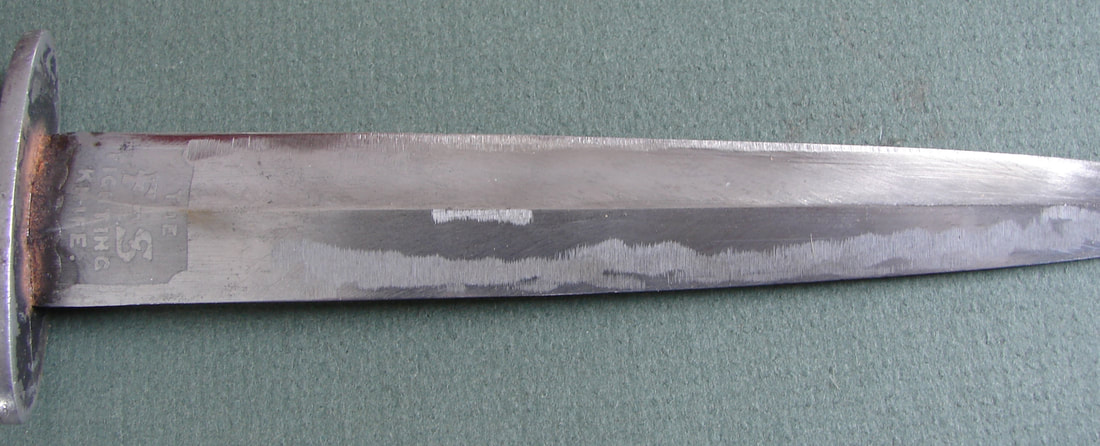
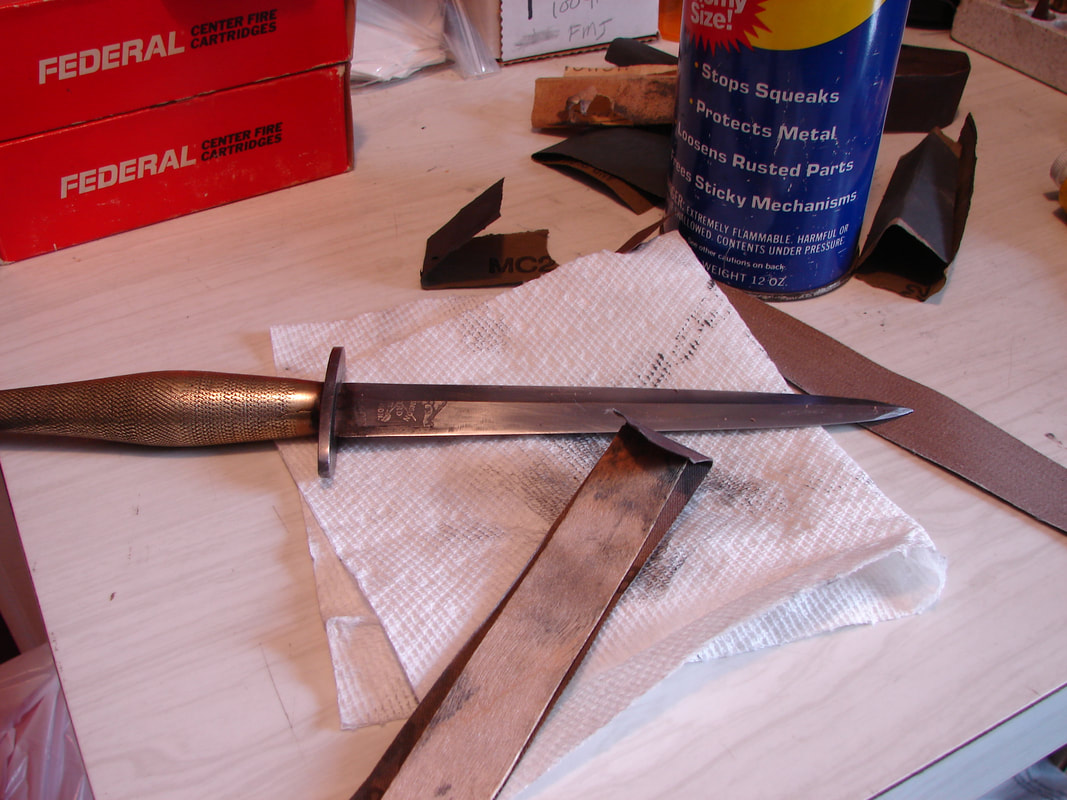
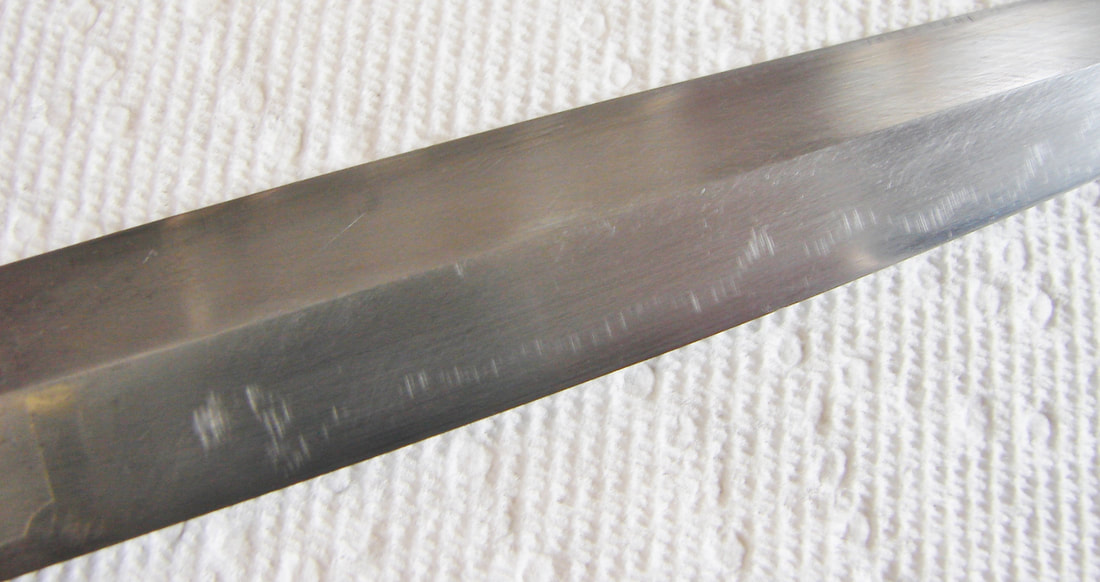
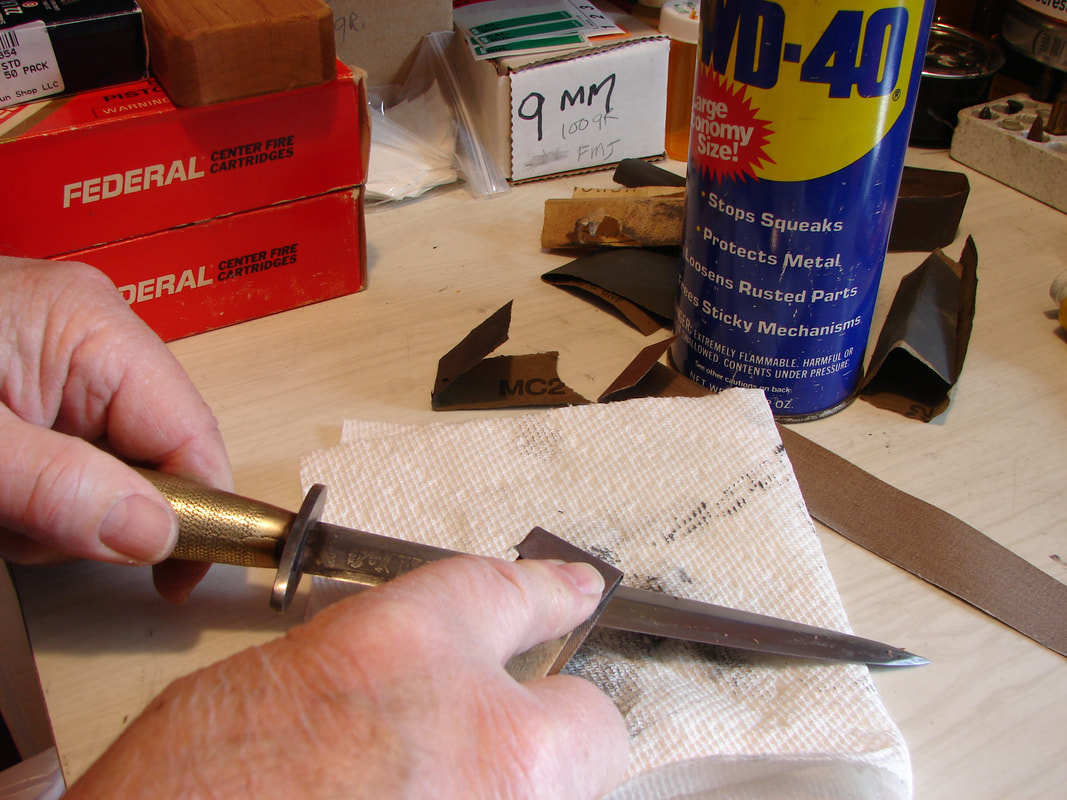
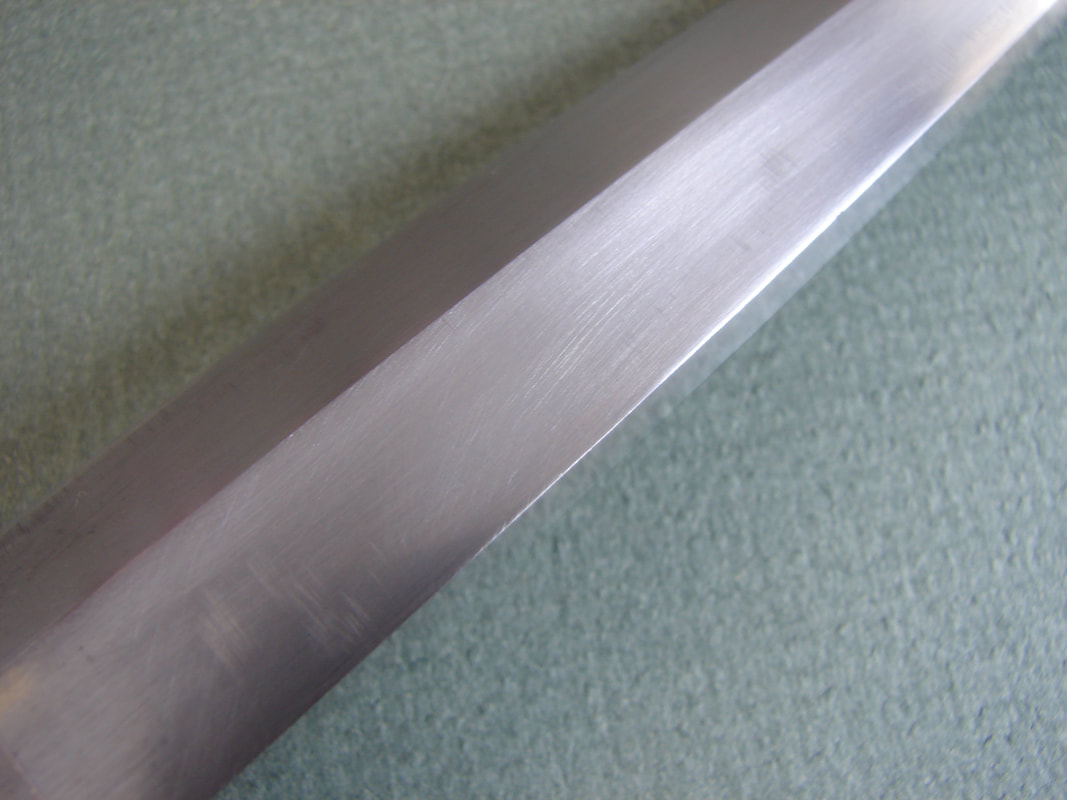
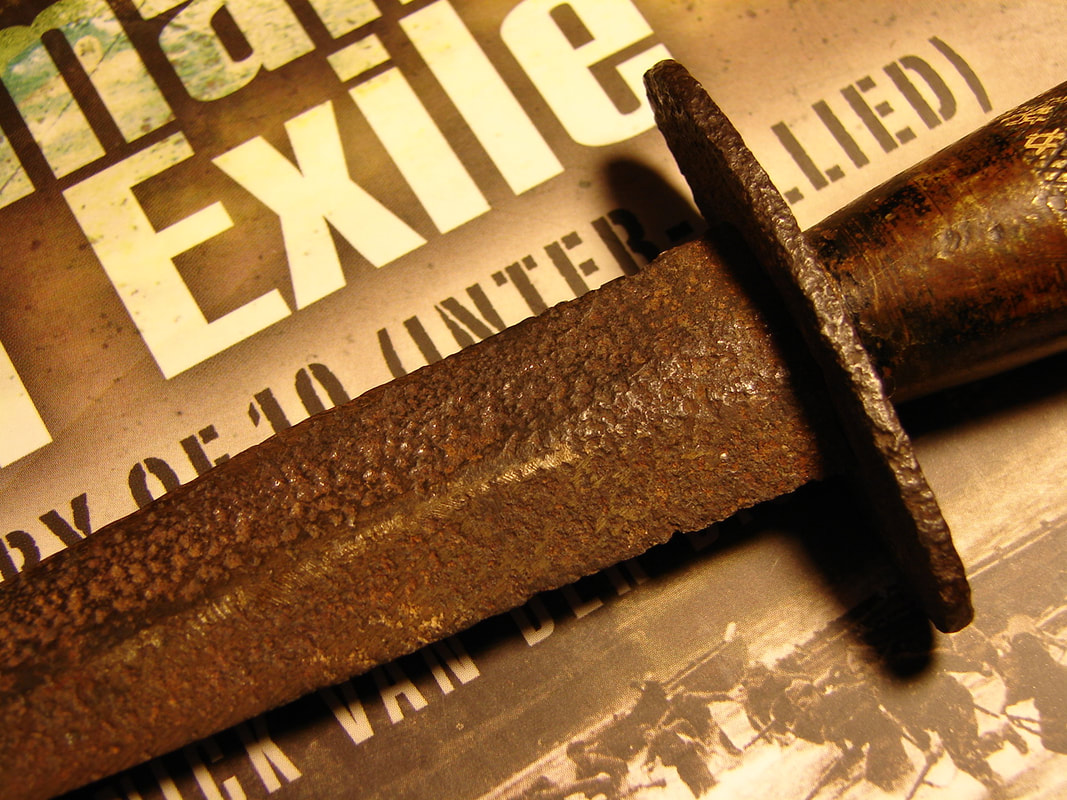

 RSS Feed
RSS Feed
